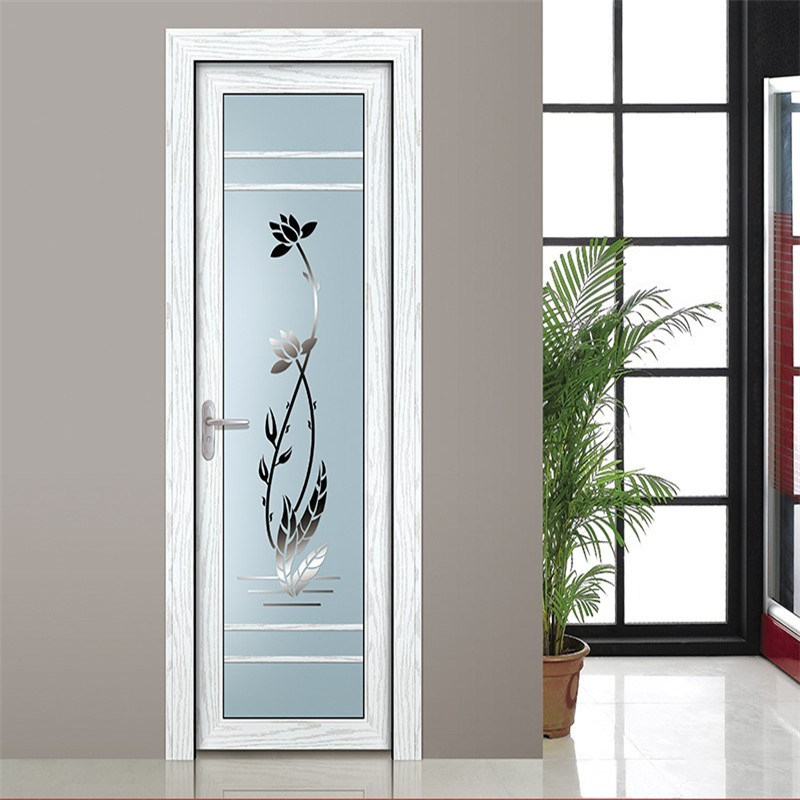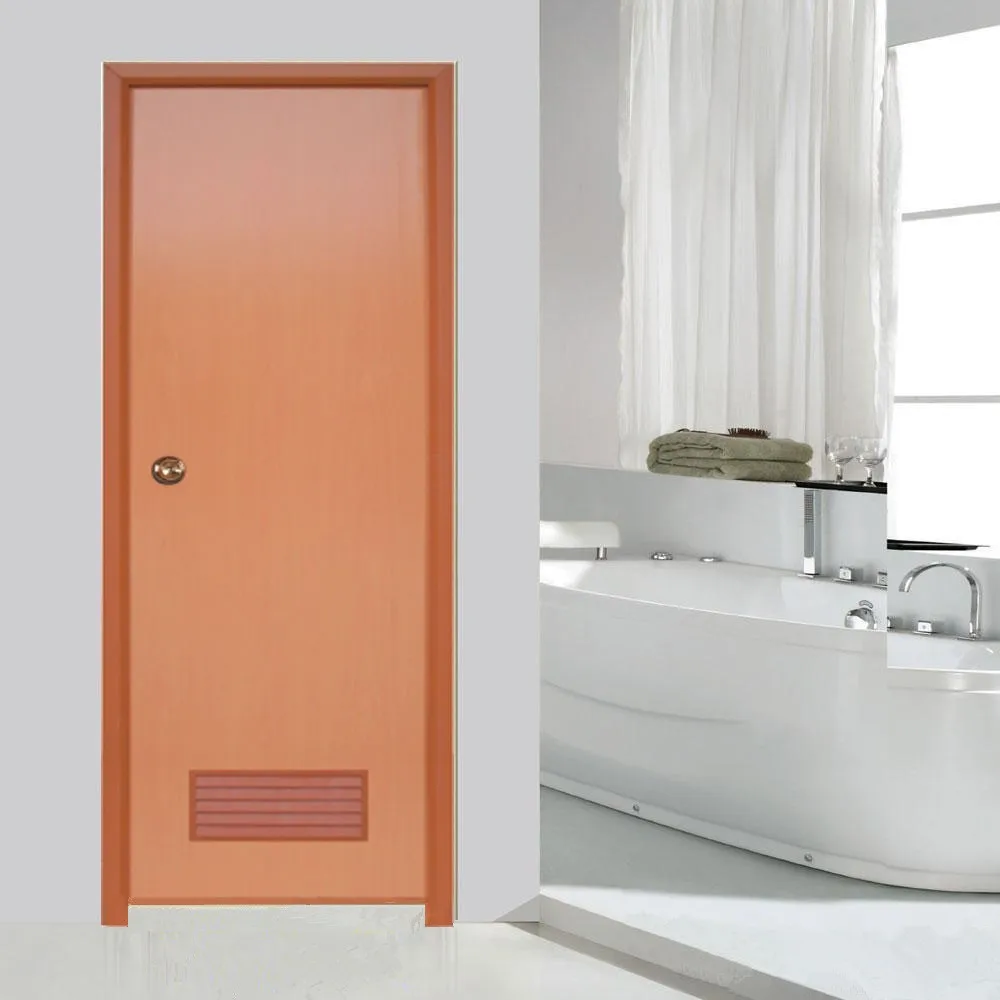Types of Plastic Bathroom Doors

Plastic bathroom doors offer a practical and stylish alternative to traditional materials like wood or glass. They are known for their moisture resistance, affordability, and versatility in design. However, the choice of plastic type significantly impacts the door’s durability, aesthetics, and overall performance. This section will explore different types of plastic commonly used for bathroom doors, highlighting their advantages and disadvantages.
Types of Plastic for Bathroom Doors
Different types of plastic are used for bathroom doors, each with its unique properties and characteristics. These plastics are chosen based on their durability, moisture resistance, and aesthetic appeal.
- Polyvinyl Chloride (PVC): PVC is a versatile and cost-effective plastic commonly used for bathroom doors. It is highly resistant to moisture and chemicals, making it ideal for humid environments. PVC doors are lightweight, easy to maintain, and available in a wide range of colors and finishes. However, PVC can be prone to scratches and dents, and it may not be as aesthetically pleasing as other materials.
- Acrylic: Acrylic is another popular choice for bathroom doors. It is known for its high impact resistance, clarity, and ability to mimic the look of glass. Acrylic doors are lightweight, shatter-resistant, and easy to clean. They are often used in modern bathroom designs, adding a touch of elegance and sophistication. However, acrylic can be susceptible to scratches, and it may not be as durable as other materials.
- Polycarbonate: Polycarbonate is a highly durable and impact-resistant plastic. It is often used for applications requiring high strength and safety, such as security doors and bulletproof windows. Polycarbonate bathroom doors are extremely strong and resistant to damage. They are also lightweight and easy to maintain. However, polycarbonate can be more expensive than other plastics, and it may not be as aesthetically pleasing as acrylic or glass.
Pros and Cons of Different Plastic Types
The choice of plastic for a bathroom door depends on the desired features and budget. Here’s a table summarizing the pros and cons of each type:
| Plastic Type | Pros | Cons |
|---|---|---|
| PVC | – Moisture resistant – Affordable – Easy to maintain – Wide range of colors and finishes |
– Prone to scratches and dents – May not be as aesthetically pleasing as other materials |
| Acrylic | – High impact resistance – Clear and transparent – Lightweight – Easy to clean – Modern and stylish |
– Susceptible to scratches – May not be as durable as other materials |
| Polycarbonate | – Extremely durable and impact resistant – Lightweight – Easy to maintain |
– More expensive than other plastics – May not be as aesthetically pleasing as acrylic or glass |
Styles of Plastic Bathroom Doors
Plastic bathroom doors come in various styles to suit different bathroom designs and preferences. Some common styles include:
- Sliding Doors: Sliding doors are a space-saving option, especially for smaller bathrooms. They operate on a track system, allowing them to slide open and closed, maximizing space.
- Hinged Doors: Hinged doors are the most traditional style, opening and closing on hinges. They offer a classic look and are suitable for various bathroom designs.
- Folding Doors: Folding doors are a space-saving option that can be folded away to maximize space. They are often used in smaller bathrooms or when limited space is available.
Advantages of Plastic Bathroom Doors: Plastic Door For Bathroom

Plastic bathroom doors offer a compelling alternative to traditional materials, presenting a range of benefits that make them a practical and stylish choice for modern bathrooms. Their unique properties provide advantages in terms of durability, maintenance, and aesthetics.
Water Resistance
Plastic’s inherent resistance to water makes it an ideal material for bathroom doors. Unlike wood, which can warp, rot, and become susceptible to mold and mildew, plastic remains unaffected by moisture. This inherent water resistance ensures that the door will not deteriorate over time, even in environments with high humidity. This translates to a longer lifespan and reduced maintenance costs.
Mold Resistance
The moisture-resistant nature of plastic also makes it highly resistant to mold and mildew growth. These organisms thrive in damp environments, but plastic’s non-porous surface prevents them from taking hold. This property is particularly important in bathrooms, where condensation and splashes are common. Mold and mildew can cause health issues and unpleasant odors, making plastic’s resistance a significant advantage.
Ease of Cleaning, Plastic door for bathroom
Plastic bathroom doors are incredibly easy to clean. Their smooth, non-porous surface prevents dirt and grime from adhering to the door, making cleaning a simple task. A quick wipe with a damp cloth is usually all that’s needed to keep the door looking spotless. This ease of maintenance saves time and effort, making plastic doors a practical choice for busy households.
Cost-Effectiveness
Plastic bathroom doors are generally more affordable than doors made from other materials, such as wood or glass. This cost-effectiveness makes them an attractive option for budget-conscious homeowners. While the initial purchase price may be lower, the long-term cost savings associated with reduced maintenance and repair needs can make plastic doors a more economical choice over time.
Modern and Stylish Design
Contrary to the perception that plastic is only for utilitarian applications, modern plastic bathroom doors can contribute to a stylish and contemporary bathroom design. Manufacturers offer a wide range of colors, textures, and finishes, allowing homeowners to select doors that complement their bathroom’s aesthetic. The sleek and minimalist look of plastic doors can enhance the overall modern appeal of a bathroom, creating a sophisticated and inviting space.
Considerations for Choosing Plastic Bathroom Doors

Selecting the right plastic bathroom door involves a careful consideration of various factors to ensure both functionality and aesthetics. The chosen door should not only meet practical needs but also seamlessly blend with the overall bathroom design.
Door Size and Style
The size of the door should be determined based on the dimensions of the bathroom entrance. Standard door sizes are available, but custom-sized doors can be ordered if necessary. The style of the door, whether it’s a single-panel, double-panel, or French door, should complement the existing bathroom decor. For example, a contemporary bathroom might benefit from a sleek, modern door design, while a traditional bathroom might prefer a more classic style.
Installation Requirements
Before making a purchase, it’s crucial to assess the installation requirements. Factors like the type of existing door frame, the wall thickness, and the presence of any obstacles need to be considered. If the existing frame is not compatible with the new door, additional modifications might be required, potentially increasing the overall cost.
Hardware Selection
Choosing the right hardware is essential for the functionality and aesthetic appeal of the door. Hinges should be durable and corrosion-resistant, especially in humid bathroom environments. Handles should be comfortable to grip and match the overall design of the door. For example, a brushed nickel finish might be suitable for a modern bathroom, while a polished brass finish might be more appropriate for a traditional bathroom.
Compatibility with Bathroom Design
The chosen door should complement the overall bathroom design. This includes considering the color scheme, the style of the fixtures, and the overall ambiance of the space. For example, a white plastic door might blend seamlessly with a minimalist bathroom, while a textured door with a wood-like finish might be more suitable for a rustic bathroom.
Plastic door for bathroom – Plastic doors, often found in bathrooms for their durability and moisture resistance, can contribute to a sense of clinical sterility. To counteract this, consider incorporating elements of warmth and visual appeal, such as dark blue bathroom curtains. The rich hue of the curtains can offset the starkness of the plastic door, creating a more inviting and personalized ambiance.
This approach not only enhances the aesthetic appeal but also fosters a sense of tranquility within the bathroom space.
Plastic bathroom doors, while offering a cost-effective and lightweight solution, sometimes present unique challenges. One such challenge arises when the door becomes locked, necessitating knowledge of how to unlock it. Fortunately, a comprehensive guide on how to unlock a bathroom door can provide the necessary steps to resolve this issue.
Understanding these methods is essential for maintaining functionality and ensuring access to the bathroom space, particularly when dealing with plastic doors.